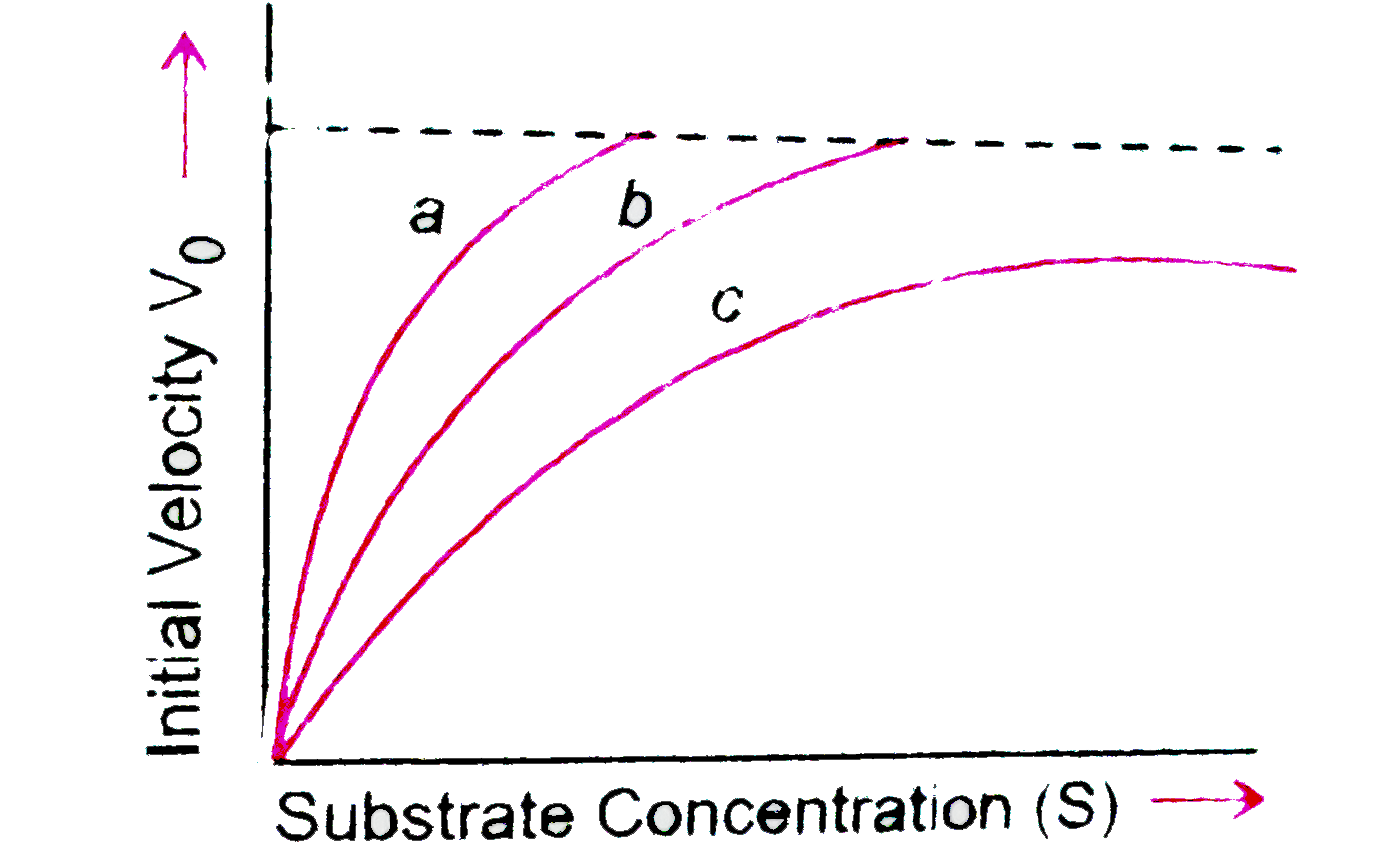The substrate concentration at which the chemical reaction catalyzed by an enzyme attains half of its maximum velocity is termed as
1/2 Km
Km
1/2 Vmax
Vmax
To solve the question regarding the substrate concentration at which the chemical reaction catalyzed by an enzyme attains half of its maximum velocity, we can follow these steps:
Step 1: Understand the Terms
- Enzyme Reaction: Enzymes are biological catalysts that speed up chemical reactions.
- Maximum Velocity (Vmax): This is the maximum rate of the reaction when the enzyme is fully saturated with substrate.
- Michaelis Constant (Km): This is a key parameter in enzyme kinetics.
Step 2: Define Km
- Km is defined as the substrate concentration at which the reaction velocity is half of Vmax. This means that when you have a substrate concentration equal to Km, the rate of the reaction is at 50% of its maximum potential.
Step 3: Relate Km to Enzyme Affinity
- A smaller Km value indicates a higher affinity of the enzyme for its substrate, meaning the enzyme can achieve half of its maximum velocity at a lower concentration of substrate.
Step 4: Conclusion
- Therefore, the substrate concentration at which the chemical reaction catalyzed by an enzyme attains half of its maximum velocity is termed as Km (Michaelis constant).
Final Answer
The substrate concentration at which the chemical reaction catalyzed by an enzyme attains half of its maximum velocity is termed as Km (Michaelis constant).
---
- Enzyme Reaction: Enzymes are biological catalysts that speed up chemical reactions.
- Maximum Velocity (Vmax): This is the maximum rate of the reaction when the enzyme is fully saturated with substrate.
- Michaelis Constant (Km): This is a key parameter in enzyme kinetics.
- Km is defined as the substrate concentration at which the reaction velocity is half of Vmax. This means that when you have a substrate concentration equal to Km, the rate of the reaction is at 50% of its maximum potential.
- A smaller Km value indicates a higher affinity of the enzyme for its substrate, meaning the enzyme can achieve half of its maximum velocity at a lower concentration of substrate.
- Therefore, the substrate concentration at which the chemical reaction catalyzed by an enzyme attains half of its maximum velocity is termed as Km (Michaelis constant).
The substrate concentration at which the chemical reaction catalyzed by an enzyme attains half of its maximum velocity is termed as Km (Michaelis constant).
Topper's Solved these Questions
Similar Questions
Knowledge Check
An enzyme promotes a chemical reaction by
Aincreasing molecular motionBlowering the energy of activationCcausing the release of heat, which acts as a primerDchanging the free energy difference between substrate and productAn enzyme promotes a chemical reaction by
Aa) lowering the energy of activationBb) changing the free energy difference between substrate and productCc) increasing molecular motionDd) All of theseA particle oscillating in simple harmonic motion has amplitude 'a'. The distance from the mean position at which its velocity will be one half of the maximum velocity is
A√32aB√3aC2√3aD1√3 a
Name the part of a cell in which many chemical reactions occur with the help of enzymes.
View SolutionThe equilibrium state can be attained from both sides of the chemical reaction.
View SolutionFigure given below shows three velocity-substrate concentration curves for an enzyme reaxtion. What do the curves for an enzyme reaction. What do the curves depict

View SolutionIn an enzyme catalyzed reaction, it is possible to reverse the inhibition of a reaction by increasing substrate concentration in which of the following case?
(a) Addition of succinate when malonate inhibits succinate dehydrogenase
(b) Addition of ATP during glycolysis
(c) Removal of glucose in hexokinase catalysed reaction
(d) Addition of acetylcholine in case of Myasthenia gravis
View SolutionDefine the term 'order of reaction' for chemical reactions.
View Solution
